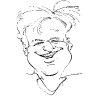(Subscribe to this discussion)
Different operational amplifier topologies are frequently thought to play a significant role in the sonic character of analog audio equipment. This paper explores whether common audio operational amplifiers are capable of producing distortion characteristics within their normal operational range that can be detected by listeners and alter listener perception of character and quality. Differences in frequency response and noise are carefully controlled while the distortion characteristics of the op-amps are amplified. Listening tests are performed in order to determine what differences listeners perceive. Listening tests also examine listener preference for different op-amps for the purpose of exploring what physical measurements best predict differences in perceived audio character and quality.
Authors:
Gaskell, Robert-Eric; Gaskell, Peter E.; Massenburg, George
Affiliation:
McGill University, Montreal, Quebec, Canada
AES Convention:
131 (October 2011)
Paper Number:
8503
Publication Date:
October 19, 2011
Subject:
Transducers and Audio Equipment
Click to purchase paper as a non-member or you can login as an AES member to see more options.
 Arnold Krueger |
Comment posted April 15, 2018 @ 15:13:19 UTC
(Comment permalink)
The paper seems to be testing Op amps in circuits where closed loop gains are far higher (100 or 40 dB) than are commonly used in consumer and professional gear. Most consumer and professional gear uses regular op amps (as opposed to special high gain differential op amps such as those designed for mic preamps) with closed loop gains in the range of unity gain to a gain of 10 or so. One apparent exception to op amp applications typically having closed loop gains of less than 10 is RIAA preamplifiers, but their closed loop gain often takes the approximate form of a low pass filter, and so their feedback at high frequencies is fallling in a similar fashion as the open loop gain of the op amp. In the same application there are a few RIAA preamps that use passive equalization, but they generally use separate op amps for buffering the inputs and outputs, and so the burden of providing gain is essentially split among two separate devices. Furthermore, today most audio gear today is either a digital converter or based on digital processing, and so there is only one op amp stage at the input for buffering an ADC, and at most 2 (if there is a separate V/I converter and buffer) at the ouput. This paper seems to be using a test circuit with 4 stages of op amps. (Respond to this comment)
|
![]() To be notified of new comments on this paper you can
subscribe to this RSS feed.
Forum users should login to see additional options.
To be notified of new comments on this paper you can
subscribe to this RSS feed.
Forum users should login to see additional options.
If you are not yet an AES member and have something important to say about this paper then we urge you to join the AES today and make your voice heard. You can join online today by clicking here.
